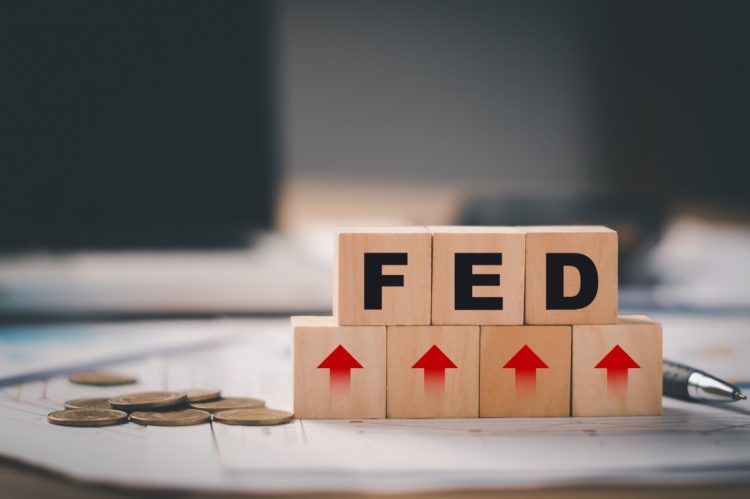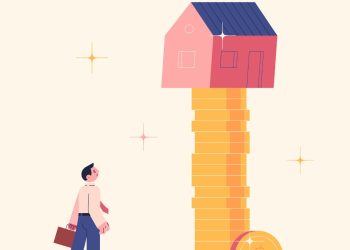Deja vu has hit the nation as yet another Federal Reserve meeting yields further interest rate hikes after a major bank collapse over the weekend.
Fed officials announced that they would raise interest rates by another quarter percent, pushing the federal funds rate between 5% and 5.25%—a 16-year high. The move marks the 10th consecutive increase that the Fed has implemented, but the lead-up to Wednesday’s meeting was filled with questions on how the central bank will proceed.
Fed officials once again hinted at a potential pause in rate hikes, removing a phrase from their previous policy statement in March that said some additional policy increases might be appropriate.
Wednesday’s statement claimed that the officials would “monitor the implications of incoming information for the economic outlook.”
Officials also stated that they are “prepared to adjust the stance of monetary policy as appropriate if risks emerge that could impede the attainment of the Committee’s goals.”
Fed Chair Jerome Powell echoed similar sentiments in a post-meeting press conference and indicated that the Federal Open Market Committee (FOMC) would take a “data-dependent approach” as they assess the need for further rate hikes.
“In determining the extent to which additional policy firming may be appropriate to return inflation to 2% over time, the committee will take into account the cumulative tightening of monetary policy, the lags with which policy affects economic activity and inflation, and economic and financial developments,” he said.
Inflation has continued to soften since its June 2022 peak, but it remains well above the 2% mark that officials have been aiming for. While the Fed has prioritized its inflation-taming efforts, recent decisions to increase rates have come amid turmoil in the financial sector.
The move comes mere days after the demise and subsequent sale of First Republic Bank, adding a third bank failure in two months, following the collapse of Silicon Valley Bank and Signature Bank in March.
Powell acknowledged the effects of the Fed’s policy tightening on rate-sensitive sectors like housing and investment. In light of recent banking stresses, he expects “further headwinds from tighter credit conditions.”
“Credit conditions had already been tightening over the past year or so in response to our policy actions and the softer economic outlook, but the strains that emerged in the banking sector in early March appear to be resulting in even tighter credit conditions for households and businesses,” he says. “In turn, these tighter credit conditions are likely to weigh on economic activity, hiring and inflation. The extent of these effects remains uncertain.
“In light of these uncertain headwinds along with monetary policy restraint we put in place, our future policy actions will depend on how events unfold,” Powell added.
Despite the continued struggles in the U.S. banking system, officials maintained that the financial sector was “sound and resilient.”
“We are committed to learning the right lessons from this episode and will work to prevent events like these from happening again,” he said.
Wednesday’s announcement gained mixed reviews from onlookers and pundits in the real estate industry, as some questioned the latest rate hike. In contrast, others saw the move as par for the course considering the Fed’s underlying goals.
“The Federal Reserve has been telegraphing from the start of its rate hikes that fighting inflation was the No. 1 priority and that bringing inflation down would not be a painless process,” said Bright MLS Chief Economist Dr. Lisa Sturtevant.
While turbulence in the banking industry has grabbed the headlines in recent weeks, she notes that the inflation levels remain elevated, which could mean that a pause in rate hikes in the near term may not be a permanent halt this year.
“The housing market impact will be tied more to the overall trajectory of economic uncertainty than to this week’s increase to the Federal funds rate,” Sturtevant said. “Mortgage rates have settled into a new normal of around 6. % on a 30-year fixed-rate loan. With growing recession risks, we could see mortgage rates dip lower, but we will not be returning to the 3% level seen during the height of the pandemic.”
According to Mike Fratantoni, SVP and chief economist for the Mortgage Bankers Association, mortgage lenders and homebuyers may find some solace in the thought of a future pause in interest rate increases.
He expects mortgage rates to drift over the year as the economy slows while forecasting that the Fed may lower rates in 2024, and as financial market volatility finally settles.
“Inflation is likely to trend down over the course of the year, particularly as weakness in the rental market begins to be reflected in the inflation numbers,” he says. “In the near term, tighter credit conditions will slow the pace of economic activity.
“The housing sector is already operating under tight credit, so we don’t expect this headwind to outweigh the benefits from somewhat lower mortgage rates,” Fratantoni continued. “The housing market is likely pulling the economy out of this slowdown, as it typically does.”
Lawrence Yun, chief economist for the National Association of REALTORS®, called the latest rate hike “unnecessary and harmful.”
“The fast rate hikes by the Fed have upended the balance sheets of many small regional banks,” he said. “They are becoming zombie-like banks, unable to lend even to good businesses as they are more concerned with balance sheet shuffling for survival.
“This situation will worsen with each additional rate hike by the Federal Reserve,” Yun continued. “Only by stopping the rate hikes, or even a reversal later in the year after verifying much calmer inflation rates, will the small banks have a better chance of survival against the big banks.”
While mortgage rates get a lot of attention as an influencing factor in the market, Sturtevant suggests that consumer sentiment is a more important factor at this point.
“Consumer confidence fell to a nine-month low last month,” she said. “News about instability in the banking sector has made people more pessimistic about the economy, even if their own personal finances have not been affected. If that unease persists, we could see a tepid housing market in the second half of the year.”












